Serving 59 students in grades Prekindergarten-6, Riverway Learning Community Charter ranks in the bottom 50% of all schools in Minnesota for overall test scores (math proficiency is bottom 50%, and reading proficiency is bottom 50%).
The percentage of students achieving proficiency in math is 30-39% (which is lower than the Minnesota state average of 45%). The percentage of students achieving proficiency in reading/language arts is 50-59% (which is approximately equal to the Minnesota state average of 51%).
The student:teacher ratio of 12:1 is lower than the Minnesota state level of 13:1.
Minority enrollment is 29% of the student body (majority Hispanic), which is lower than the Minnesota state average of 39% (majority Black and Hispanic).
Quick Stats (2025)
- School Type: Charter School
- Grades: Prekindergarten-6
- Enrollment: 59 students
- Student:Teacher Ratio: 12:1
- Minority Enrollment: 29%
- Overall Testing Rank: Bottom 50% in MN
- Math Proficiency: 30-39% (Btm 50%)
- Reading Proficiency: 50-59% (Top 50%)
- Science Proficiency: <50% (Top 30%)
- Source: National Center for Education Statistics (NCES), MN Dept. of Education
Top Rankings
Riverway Learning Community Charter ranks among the top 20% of public schools in Minnesota for:
Category
Attribute
Most improved public schools
School Overview
Riverway Learning Community Charter's student population of 59 students has declined by 9% over five school years.
The teacher population of 5 teachers has declined by 16% over five school years.
School Type
Grades Offered
Grades Prekindergarten-6
Total Students
59 students
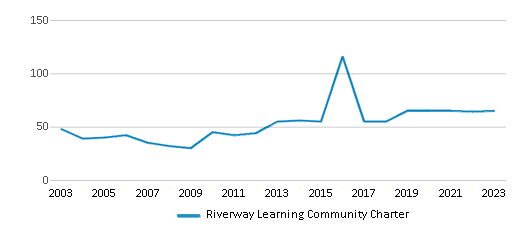
Gender %
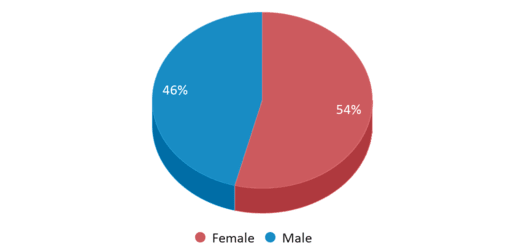
Total Classroom Teachers
5 teachers
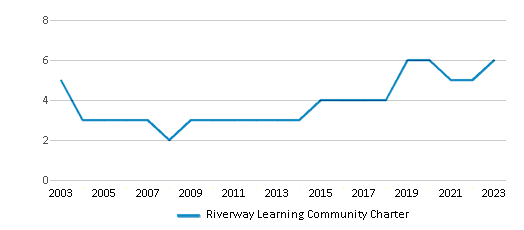
Students by Grade
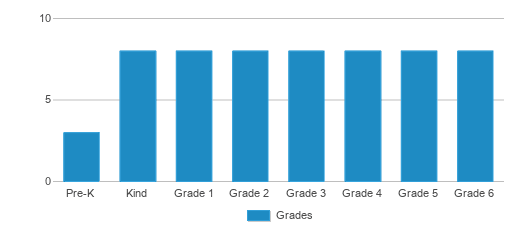
School Rankings
Riverway Learning Community Charter ranks within the bottom 50% of all 1,860 schools in Minnesota (based off of combined math and reading proficiency testing data).
The diversity score of Riverway Learning Community Charter is 0.47, which is less than the diversity score at state average of 0.59. The school's diversity has stayed relatively flat over five school years.
Overall Testing Rank
#970 out of 1860 schools
(Bottom 50%)
(Bottom 50%)
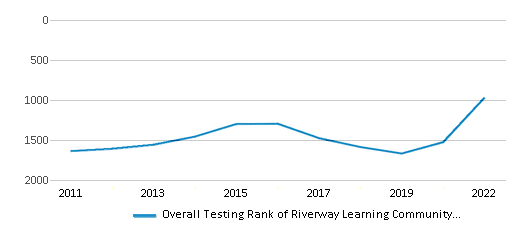
Math Test Scores (% Proficient)
30-39%
45%
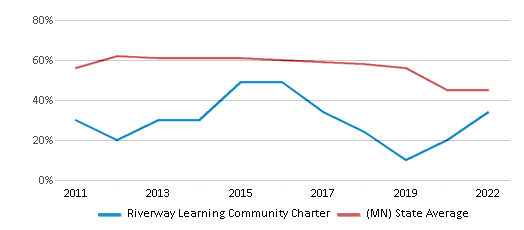
Reading/Language Arts Test Scores (% Proficient)
50-59%
51%
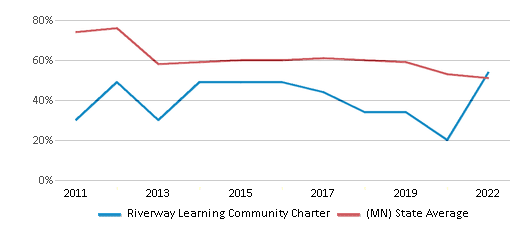
Science Test Scores (% Proficient)
<50%
41%
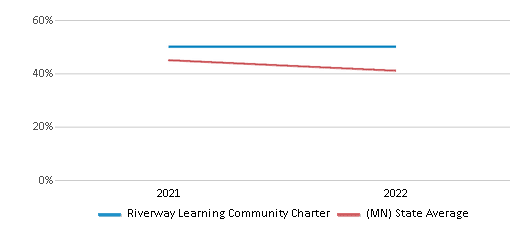
Student : Teacher Ratio
12:1
13:1
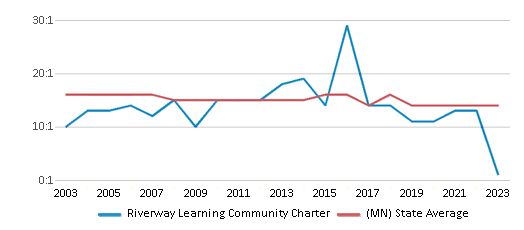
American Indian
n/a
2%
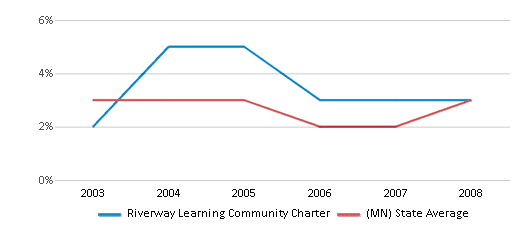
Asian
n/a
7%
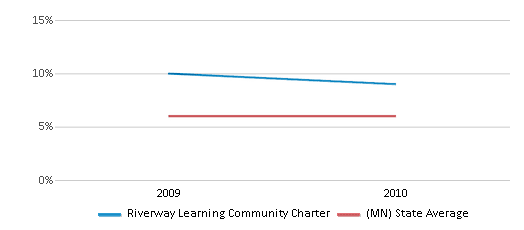
Hispanic
10%
12%
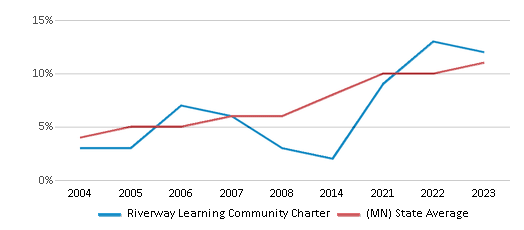
Black
9%
12%
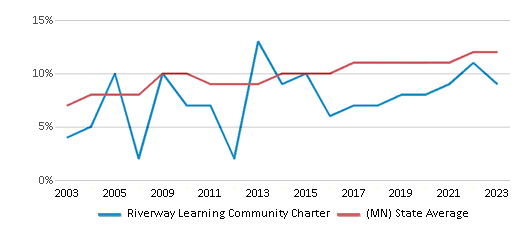
White
71%
61%
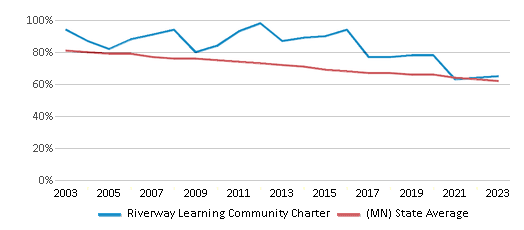
Hawaiian
n/a
n/a
Two or more races
10%
6%
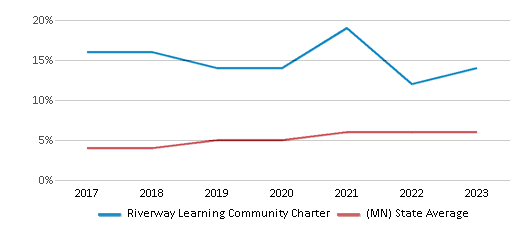
All Ethnic Groups

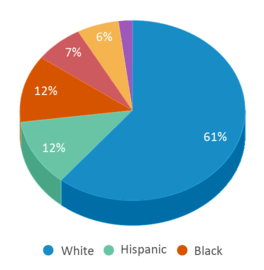
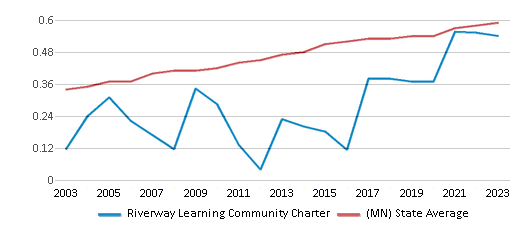
Participates in the National School Lunch Program (NSLP)
Yes
Eligible for Free Lunch
64%
36%

Eligible for Reduced Lunch
7%
7%
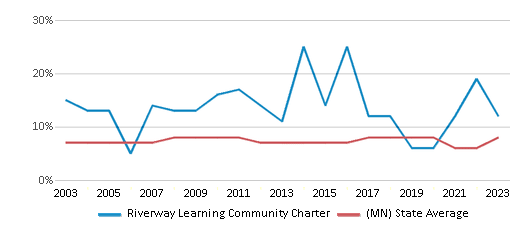
School Statewide Testing
School District Name
Source: National Center for Education Statistics (NCES), MN Dept. of Education
School Notes
- Riverway Leanring Community is a Charter Public School authorized by the Audubon Cener of the Northwoods and serves the community in and aorund Winona, MN. As the only preK-12 grade school in the area, Riverway offers a unique environemnt designed to nurture the mind, body, and spirit of the stutndets and to help inspire them to excellence in learning and life. With a total planned population of 120, the school is dedicated to maintaining small, intimate classes that allow staff to craft individualized learning plans for each studnet.
- Our five core values of Respect, Responsibility, Peace, Preparedness, and Saety guide decisioin making and ensure that every person at the school has the opportunity to grow and succeed.
Profile last updated: 02/09/2025
Frequently Asked Questions
What is Riverway Learning Community Charter's ranking?
Riverway Learning Community Charter is ranked #970 out of 1,860 schools, which ranks it among the bottom 50% of public schools in Minnesota.
What schools are Riverway Learning Community Charter often compared to?
Riverway Learning Community Charteris often viewed alongside schools like Riverway Secondary, Bluffview Montessori by visitors of our site.
What percent of students have achieved state testing proficiency in math and reading?
30-39% of students have achieved math proficiency (compared to the 45% MN state average), while 50-59% of students have achieved reading proficiency (compared to the 51% MN state average).
How many students attend Riverway Learning Community Charter?
59 students attend Riverway Learning Community Charter.
What is the racial composition of the student body?
71% of Riverway Learning Community Charter students are White, 10% of students are Hispanic, 10% of students are Two or more races, and 9% of students are Black.
What is the student:teacher ratio of Riverway Learning Community Charter?
Riverway Learning Community Charter has a student ration of 12:1, which is lower than the Minnesota state average of 13:1.
What grades does Riverway Learning Community Charter offer ?
Riverway Learning Community Charter offers enrollment in grades Prekindergarten-6
What school district is Riverway Learning Community Charter part of?
Riverway Learning Community Charter is part of Riverway Learning Community Charter School District.
School Reviews
Review Riverway Learning Community Charter. Reviews should be a few sentences in length. Please include any comments on:
- Quality of academic programs, teachers, and facilities
- Availability of music, art, sports and other extracurricular activities
Recent Articles

What Is A Charter School?
Explore the world of charter schools in this comprehensive guide. Learn about their history, how they operate, and the pros and cons of this educational innovation. Discover key facts about charter schools, including admission policies, demographics, and funding, as well as what to look for when considering a charter school for your child.

10 Reasons Why High School Sports Benefit Students
Discover the 10 compelling reasons why high school sports are beneficial for students. This comprehensive article explores how athletics enhance academic performance, foster personal growth, and develop crucial life skills. From improved fitness and time management to leadership development and community representation, learn why participating in high school sports can be a game-changer for students' overall success and well-being.

February 05, 2025
Understanding the U.S. Department of Education: Structure, Impact, and EvolutionWe explore how the Department of Education shapes American education, from its cabinet-level leadership to its impact on millions of students, written for general audiences seeking clarity on this vital institution.





